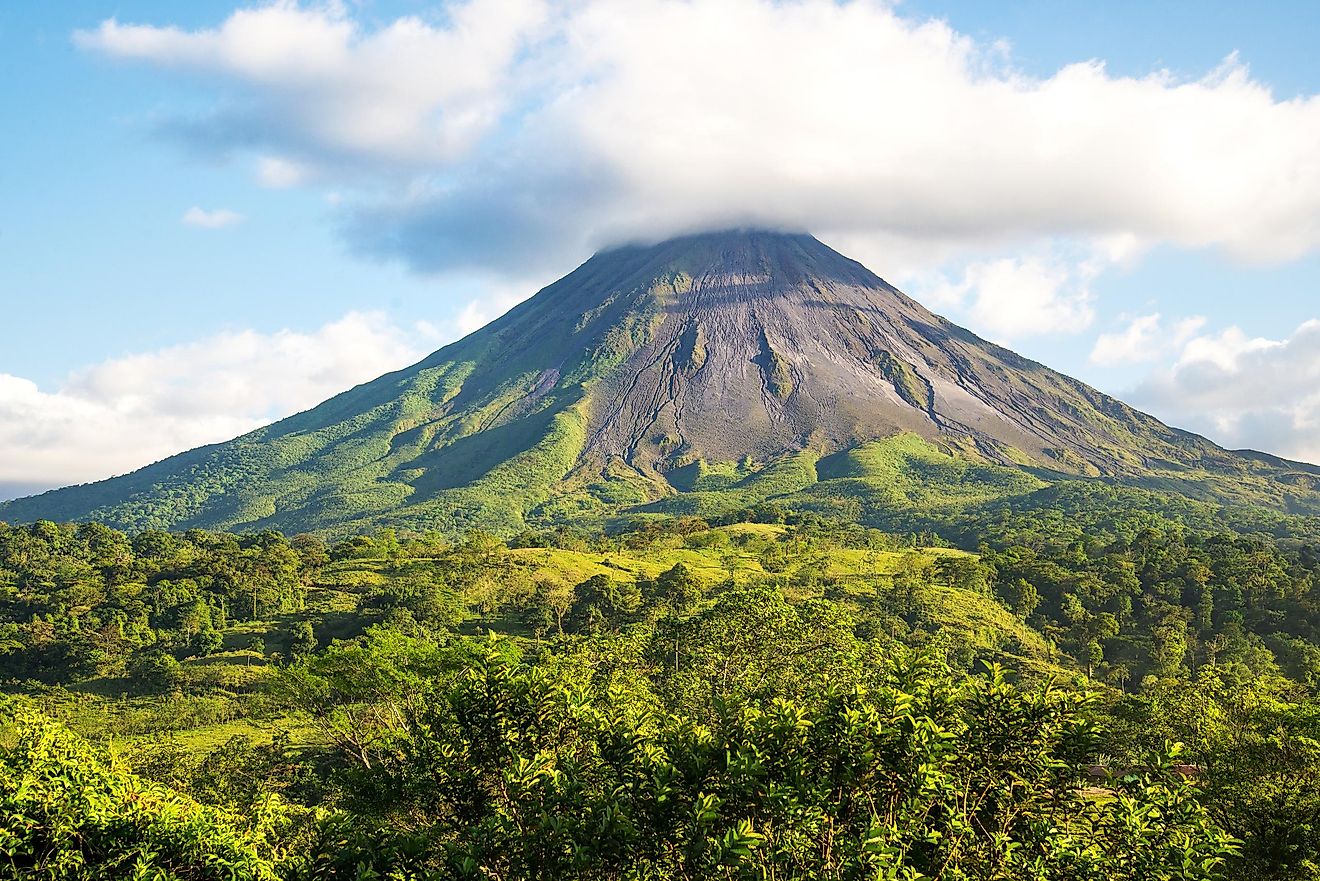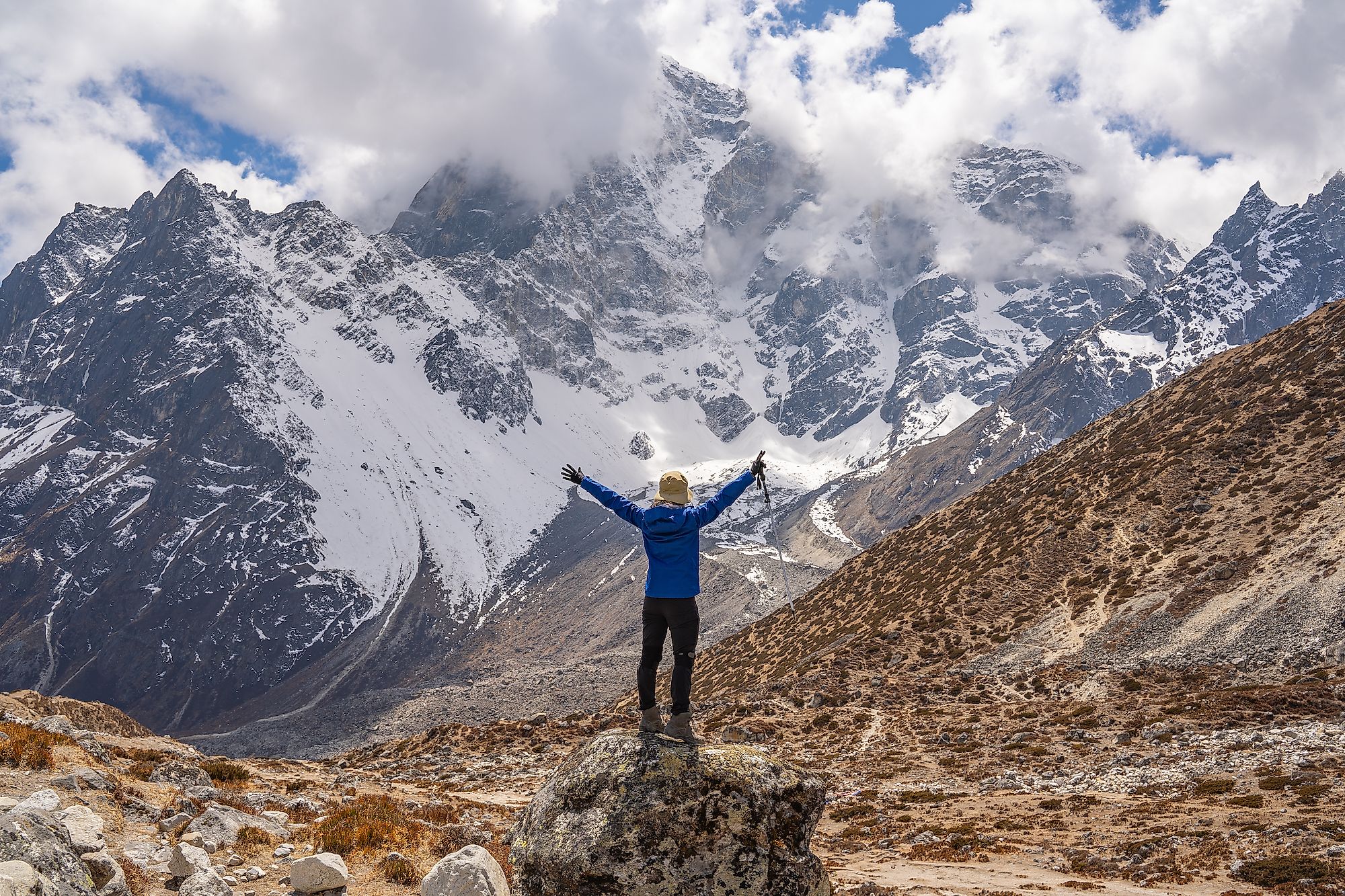
10 Highest Mountains In Nepal
The Himalayas, the greatest mountain system in Asia and one of the youngest mountain ranges on Earth, extends for 2,400 km across the countries of Nepal, China, Bhutan, India, and Pakistan. Of these five countries, the Himalayas in Nepal constitutes the highest part that occupies the east-central section of the mighty Himalayan Mountain range. About eight of the world’s fourteen eight-thousanders are located in Nepal either completely or on the border with the countries of India and China. The 5 highest mountains of Nepal have been discussed below:
- Mount Everest – 8,848.86m
- Mount Kangchenjunga – 8,598m
- Mount Lhotse – 8,516m
- Mount Makalu – 8,485m
- Mount Cho Oyu – 8,188m
- Mount Dhaulagiri I – 8,167m
- Mount Manaslu – 8,163m
- Mount Annapurna I – 8,091m
- Mount Gyachung Kang – 7,952m
- Mount Annapurna II – 7,937m
1. Mount Everest – 8,848.86m
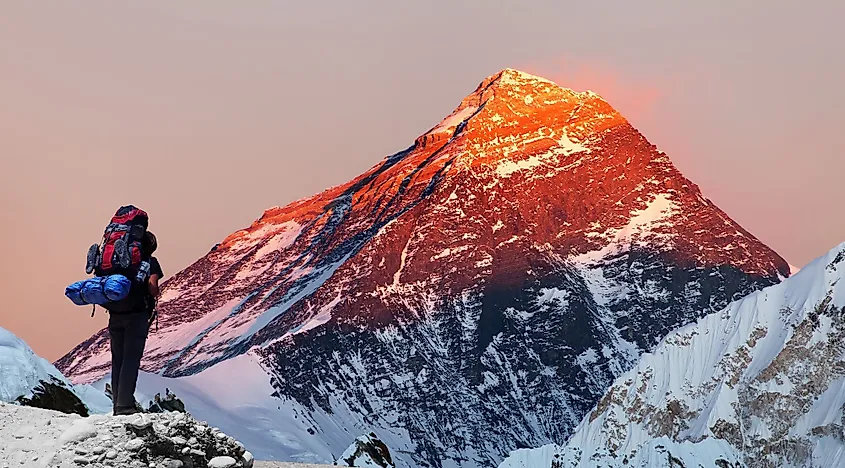
Nepal is home to Mount Everest, the world’s highest mountain which rises to an elevation of 8,848.86m. The mountain is located on the boundary between Nepal and the Tibet Autonomous Region of China, in the Mahalangur Himal subrange of the Himalayas. The Government of Nepal and the native Nepali people refer to the mountain as “Sagarmatha” which means “the Head in the Great Blue Sky” in the native language. The Tibetans have revered the mountain as a ‘sacred place’ for several centuries and refer to it as “Chomolungma” which means “Holy Mother”.
Being the world’s highest mountain, Mount Everest attracts numerous mountaineers and tourists from all over the world. It has been recorded that more than 5,000 people attempt to summit this high mountain every year. The New Zealand mountaineer Sir Edmund Hillary and the local Nepali Sherpa Tenzing Norgay became the first men to reach the summit of Mount Everest on May 29, 1953. In Nepal, Mount Everest and its surrounding valleys form a part of the Sagarmatha National Park that was designated as a UNESCO World Heritage Site in 1979.
2. Mount Kangchenjunga – 8,598m
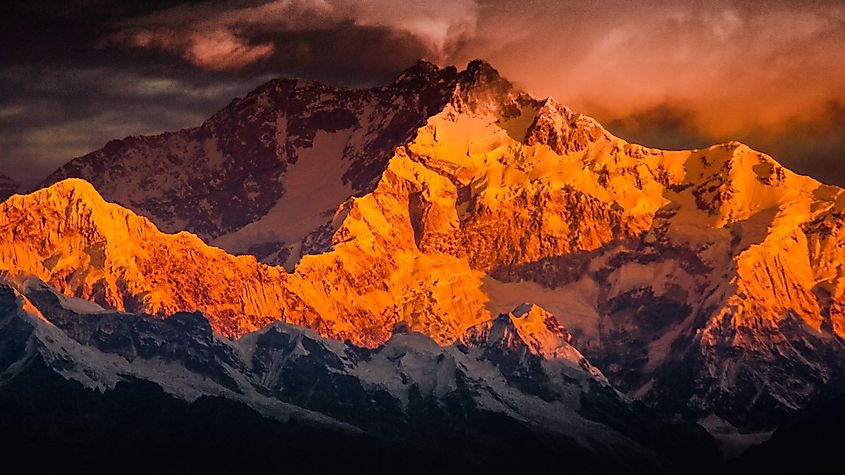
The next highest mountain in Nepal after Mount Everest is Mount Kangchenjunga, which rises to an elevation of 8,598m. The mountain is located along the boundary between Nepal and India, in the Kangchenjunga Himal section of the Himalayan Mountain Range. Mount Kangchenjunga is also considered the world’s third-highest mountain and the highest mountain in India. Three of Kanchenjunga’s five major peaks are situated on the border between Nepal and India, while the remaining two peaks are located in the Taplejung District of Nepal. Joe Brown and George Band – the two English mountaineers became the first to successfully ascend Mount Kangchenjunga on May 25, 1955. Many protected areas like Kangchenjunga Conservation Area, Khangchendzonga National Park, Pangolakha Wildlife Sanctuary, Varsey Rhododendron Sanctuary, etc have been established to protect the unique Kangchenjunga ecosystem.
3. Mount Lhotse – 8,516m
Mount Lhotse which rises to an elevation of 8,516m, is the world’s fourth-highest mountain and the third highest mountain in Nepal. The mountain is located along the boundary between the Khumbu region of Nepal and the Tibet Autonomous Region of China in the Mahalangur Himal section of the Himalayan Mountain Range. Mount Lhotse forms a part of the Everest massif and is situated close to Mount Everest. The Swiss mountaineers Ernst Reiss and Fritz Luchsinger became the first to successfully ascend the main summit of Mount Lhotse on May 18, 1956. As of December 2008, about 371 climbers have reached the summit of Mount Lhotse and about 20 people have died during their attempts.
4. Mount Makalu – 8,485m
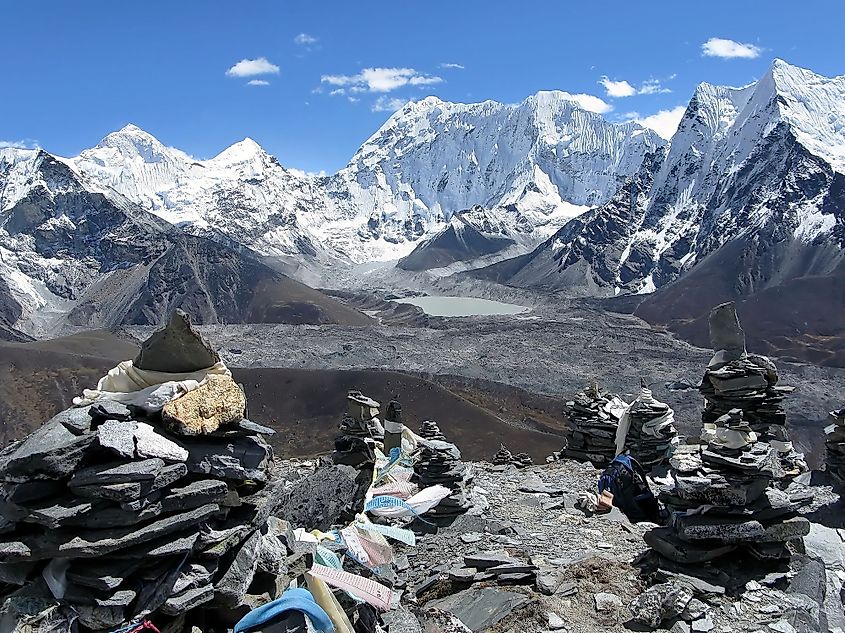
Mount Makalu which rises to an elevation of 8,485m is the fourth highest mountain in Nepal and the fifth highest mountain in the world. The mountain is situated along the boundary between Nepal and the Tibet Autonomous Region of China, in the Mahalangur Himal section of the Himalayas. Mount Makalu is noted for its pyramid-shaped peak and was first climbed by the French mountaineers Jean Couzy and Lionel Terray on May 15, 1955. In Nepal, Mount Makalu and its surrounding high peaks form a part of the Makalu Barun National Park.
5. Mount Cho Oyu – 8,188m
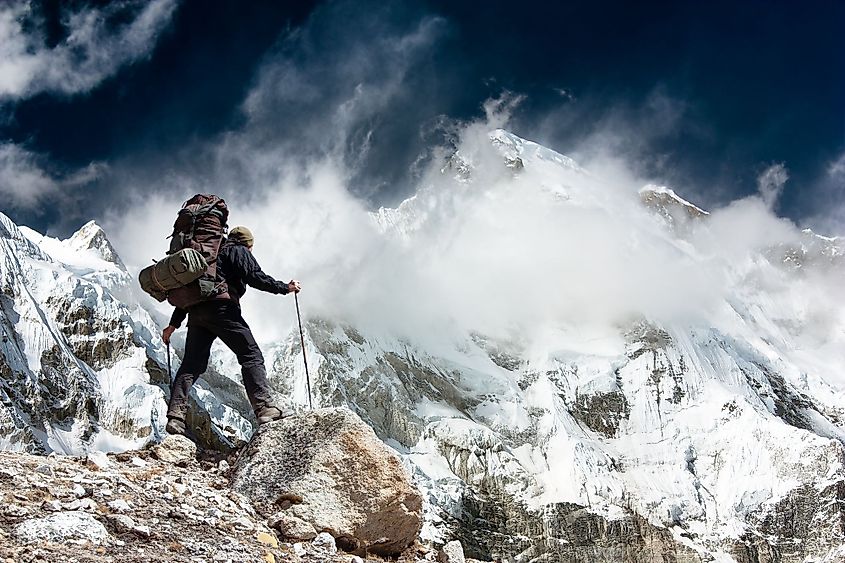
Mount Cho Oyu which rises to an elevation of 8,188m is the fifth highest mountain in Nepal and the sixth-highest mountain in the world. The mountain is situated along the boundary between Nepal and China and forms the westernmost major peak of the Khumbu sub-section in the Mahalangur Himal section of the Himalayas. After Mount Everest, Mount Cho Oyu is the second most climbed eight-thousander and is considered to be the easiest peak to be climbed among all the eight-thousander peaks. The Austrian climbers Joseph Jöchler, Herbert Tichy, and Pasang Dawa Lama – the local Sherpa became the first men to successfully climb Mount Cho Oyu on October 19, 1954.
6. Mount Dhaulagiri I – 8,167m
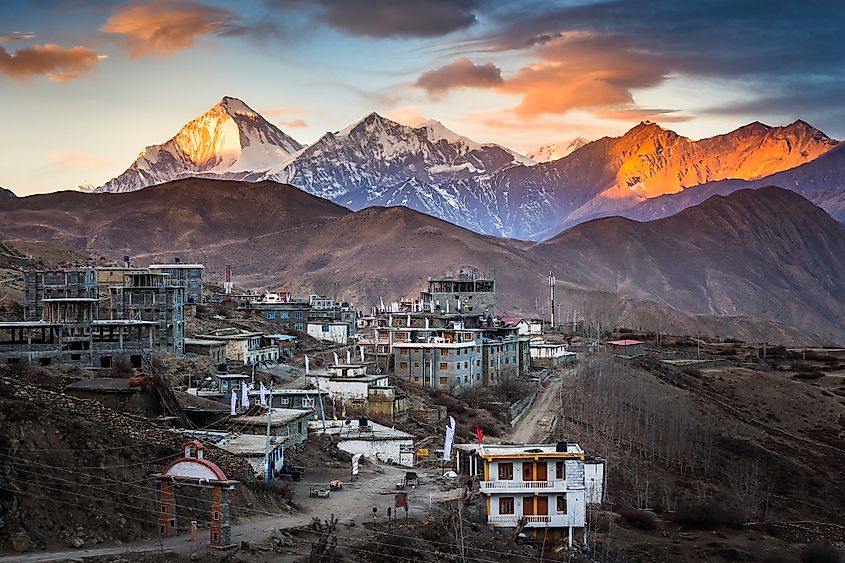
Mount Dhaulagiri I which rises to an elevation of 8,167m is the sixth highest mountain in Nepal and the seventh-highest mountain in the world. It is also the highest mountain that is situated entirely within the boundaries of Nepal. The Myagdi Khola River borders the Dhaulagiri massif in the southeast while the tributaries of the Bheri River border the Dhaulagiri massif in the southwest. The Kali Gandaki Gorge of the Kali Gandaki River separates the principal peaks of Dhaulagiri in the west from the Annapurna Mountain in the east. Mount Dhaulagiri I was first climbed by a team of Swiss and Austrian mountaineers led by Kurt Diemberger, Peter Diener, Albin Schelbert, Ernst Forrer, and two Sherpas Nyima Dorje and Nawang Dorje on May 13, 1960.
7. Mount Manaslu – 8,163m
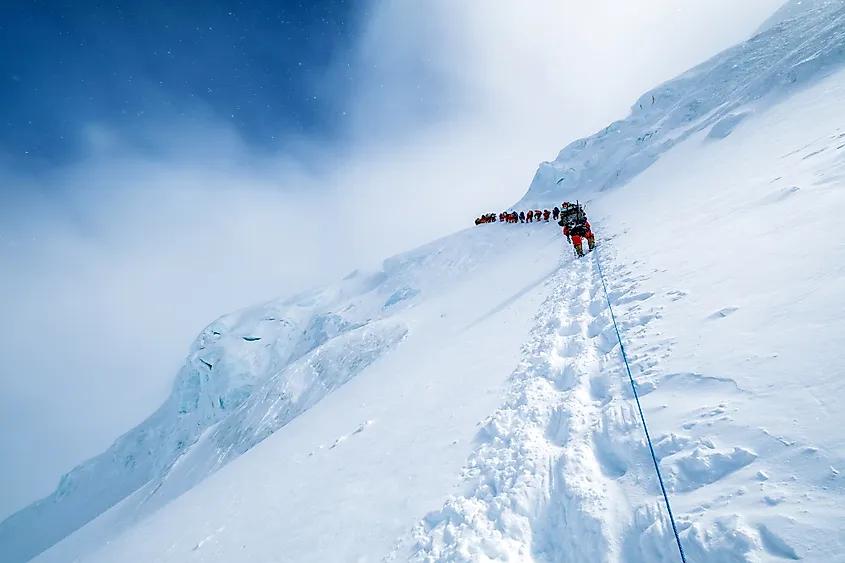
Mount Manaslu which rises to an elevation of 8,163m is the seventh highest mountain in Nepal and the eighth highest mountain in the world. The mountain is situated in the Gorkha District of Nepal in the Mansiri Himal subrange of the Nepalese Himalayas. Mount Manaslu was first climbed by a Japanese expedition team that was led by Toshio Imanishi and Gyalzen Norbu on May 9, 1956. As of 2008, the mountain has been climbed about 297 times and over 53 people have died in their attempts. In December 1998, the area surrounding Mount Manaslu was declared as “Manaslu Conservation Area” to conserve the unique mountain ecosystem.
8. Mount Annapurna I – 8,091m
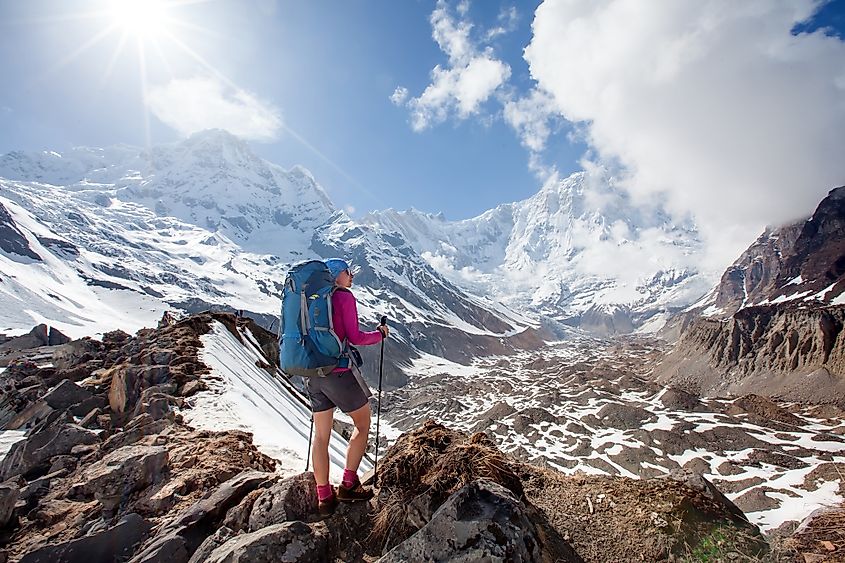
Mount Annapurna I which rises to an elevation of 8,091m is the eighth highest mountain in Nepal and the world’s tenth highest mountain. Situated in the north-central part of Nepal, the Annapurna massif forms a part of the Himalayan Mountain Range. The Annapurna massif contains many high peaks among which the Annapurna I Main is the highest. Mount Annapurna I was first climbed by the French mountaineers Maurice Herzog and Louis Lachenal on June 3, 1950. Like all the other high mountains, Mount Annapurna I is also extremely difficult to climb and has the highest fatality to summit ratio compared to the other eight-thousanders on the planet.
9. Mount Gyachung Kang – 7,952m
Mount Gyachung Kang which rises to an elevation of 7,952m is the ninth highest mountain in Nepal and the world’s fifteenth highest mountain. The mountain is situated on the boundary between Nepal and China in the Mahalangur Himal section of the Himalayan Mountain range. Mount Gyachung Kang is also the highest peak that is located between Mount Everest and Mount Cho Oyu. Mount Gyachung Kang was first climbed by a Japanese expedition team led by K. Sakaizawa, Y. Kato, and Pasang Phutar on April 10, 1964. In 1999, a Slovene expedition team first climbed the northern face of Mount Gyachung Kang.
10. Mount Annapurna II – 7,937m
Mount Annapurna II which rises to an elevation of 7,937m is the tenth highest mountain in Nepal and the world’s sixteenth highest mountain. Situated in Nepal, Mount Annapurna II forms the eastern anchor of the Annapurna Mountain range and is considered as the range’s second-highest peak. Mount Annapurna II was first climbed by a British expedition team led by Lieutenant Colonel J. O. M. Roberts, Chris Bonington, Richard Grant, and the local Sherpa Ang Nyima on May 17, 1960.
As seen from the above discussion, most of the highest mountains in the world are located in Nepal and therefore the country is considered a mountaineer’s paradise and offers its visitors a lifetime experience in the lap of the snow-capped mountains. The large number of tourists from all over the world that visit to witness the majestic splendor of these mountains helps to support the tourism industry. Mountain ecosystems are also important centers of biodiversity and therefore several protected areas have been established in these regions to conserve the rich and unique biodiversity of the mountainous ecosystems. However, these high mountains are extremely threatened due to the increase in global temperatures and anthropogenic climate change. Also, many of these mountainous regions are severely polluted due to the accumulation of garbage that has been left behind by the climbers. The Government of Nepal has taken up several measures to protect and preserve these fragile mountain ecosystems.
The 20 Highest Peaks In Nepal
| Mountain/Peak | Height (in meters) | |
|---|---|---|
| 1 |
Mount Everest |
8,849 |
| 2 |
Kanchenjunga |
8,586 |
| 3 |
Lhotse |
8,516 |
| 4 |
Makalu |
8,485 |
| 5 |
Cho Oyu |
8,188 |
| 6 |
Dhaulagiri I |
8,167 |
| 7 |
Manaslu |
8,163 |
| 8 |
Annapurna I |
8,091 |
| 9 |
Gyachung Kang |
7,952 |
| 10 |
Annapurna II |
7,937 |
| 11 |
Himalchuli |
7,893 |
| 12 |
Ngadi Chuli |
7,871 |
| 13 |
Nuptse |
7,861 |
| 14 |
Dhaulagiri II |
7,751 |
| 15 |
Jannu |
7,711 |
| 16 |
Dhaulagiri IV |
7,661 |
| 17 |
Dhaulagiri V |
7,618 |
| 18 |
Annapurna III |
7,555 |
| 19 |
Jongsong Peak |
7,462 |
| 20 |
Gangapurna |
7,455 |
